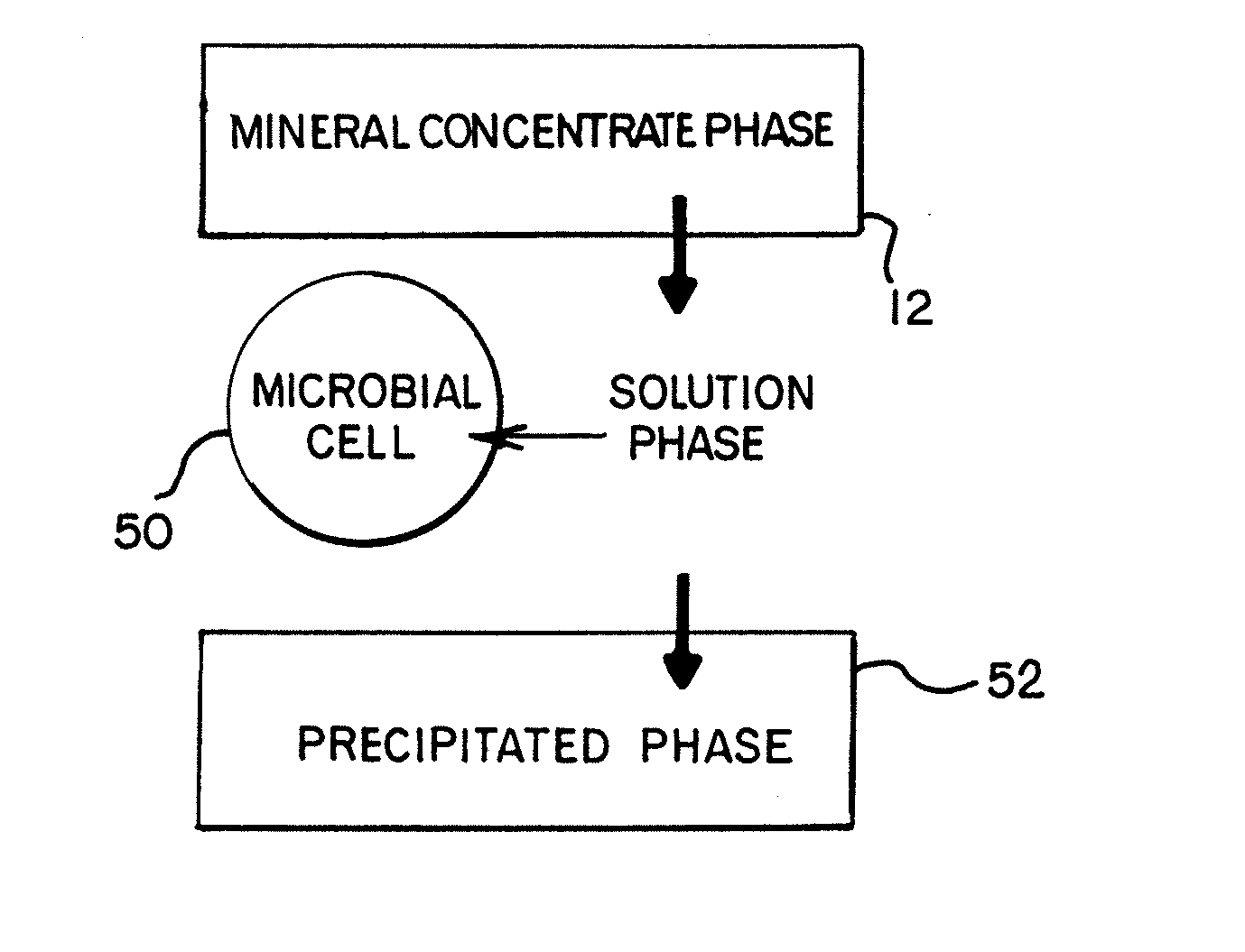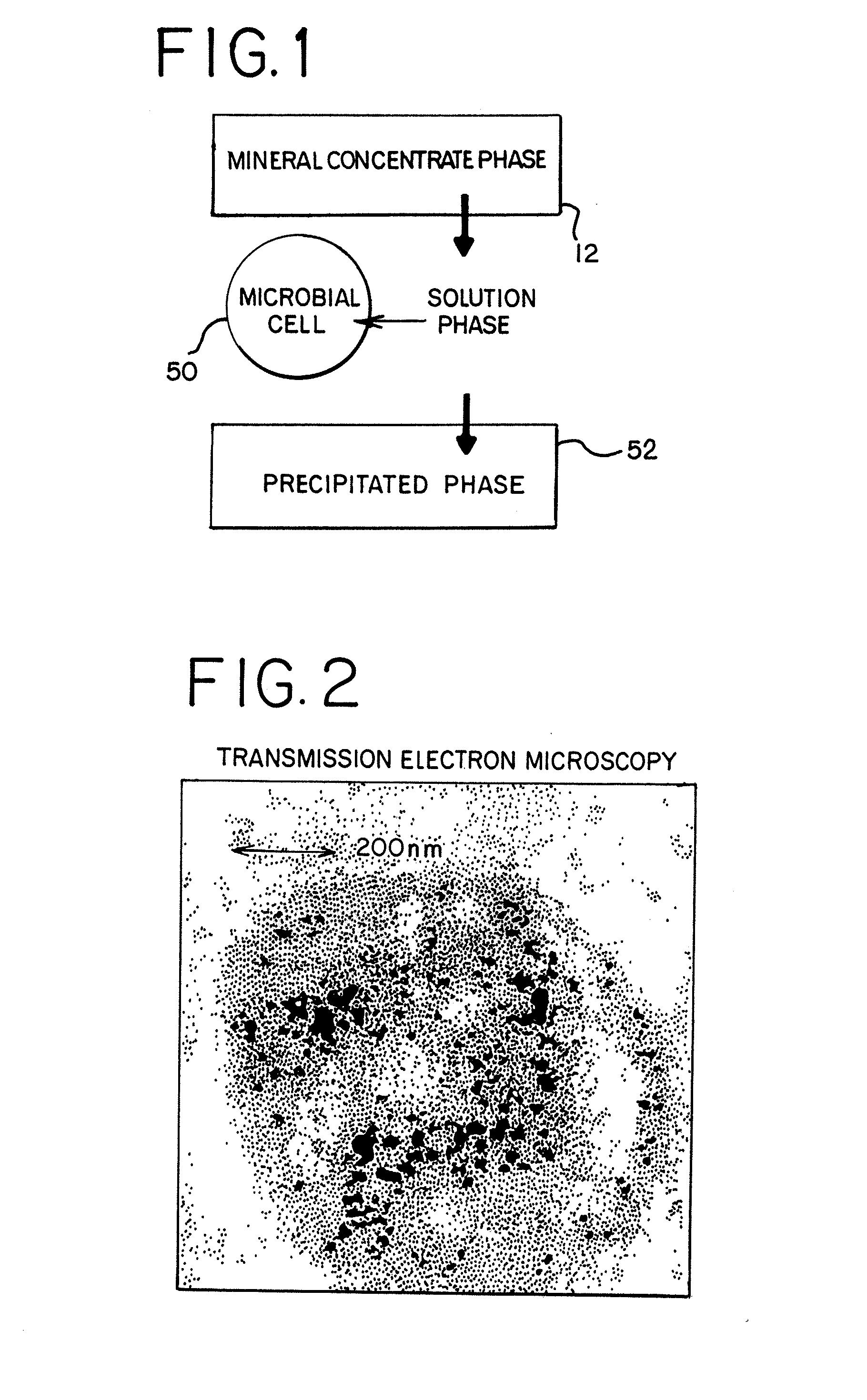Metal Recovery from a Tank Bioleaching Solution with the Use of Coated Magnetic Particles
a technology of bioleaching solution and metal recovery, which is applied in the direction of blast furnace components, furnace types, furnaces, etc., can solve the problems of bioleaching archaea's damage to trasiently soluble silver, inability to render metal compounds soluble during the bioleaching process, and high metal concentration, etc., to achieve high metal concentration, high affinity for copper, and increase the throughput and processing rate of copper concentrates
- Summary
- Abstract
- Description
- Claims
- Application Information
AI Technical Summary
Benefits of technology
Problems solved by technology
Method used
Image
Examples
Embodiment Construction
[0027]FIG. 3 of the accompanying drawings illustrates a bioleaching reactor 10 to which is added a slurry 12 which contains at least one or more base metals and a silver compound. Air 14 is sparged via a diffuser 16 into the slurry in a lower region of the reactor. The air may be enriched with oxygen or carbon dioxide or both. The reactor is agitated by means of an impeller 18 which is driven in a controlled manner by a motor 20.
[0028]Small magnetic particles 24 are derived from a suitable source 26 and are fed in a regulated manner, determined by a control unit 28, to the reactor prior to startup, and during operation, of the reactor. The particles are sufficiently small to ensure that they remain in suspension in the slurry in the reactor. The particles are coated beforehand using any appropriate technique with a suitable compound that exhibits a selective and high affinity for silver in the prevailing chemical and physical conditions in the reactor 10. Typically, without being li...
PUM
| Property | Measurement | Unit |
|---|---|---|
| Temperature | aaaaa | aaaaa |
| Temperature | aaaaa | aaaaa |
| Temperature | aaaaa | aaaaa |
Abstract
Description
Claims
Application Information
 Login to View More
Login to View More - R&D
- Intellectual Property
- Life Sciences
- Materials
- Tech Scout
- Unparalleled Data Quality
- Higher Quality Content
- 60% Fewer Hallucinations
Browse by: Latest US Patents, China's latest patents, Technical Efficacy Thesaurus, Application Domain, Technology Topic, Popular Technical Reports.
© 2025 PatSnap. All rights reserved.Legal|Privacy policy|Modern Slavery Act Transparency Statement|Sitemap|About US| Contact US: help@patsnap.com



